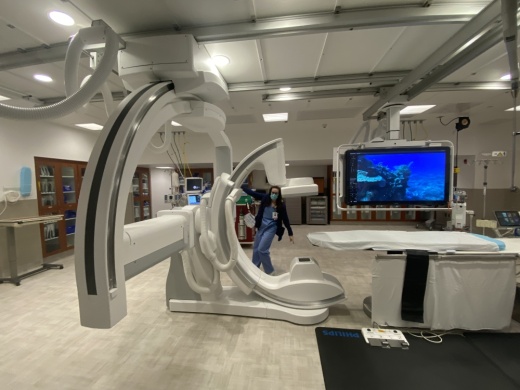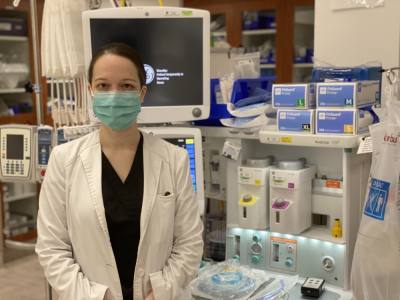A clinical nurse coordinator at St. David’s North Austin Medical Center, Taylor has worked extensively with stroke victims throughout his career.
While shopping with his wife, Tami Taylor, on Jan. 22, his right arm went numb and the vision in his left eye started fading. Jimmy told Tami he was pretty sure he was having a stroke.
Tami, who is the chief nursing officer at St. David’s Round Rock Medical Center, gave him an on-site exam and decided to drive him to the Round Rock facility.
As part of his immediate treatment, staff performed a CT scan and then administered a clot-busting drug, or thrombolytic.
“I’ve seen [stroke treatment] lots of times from outside the bed rails,” Jimmy said. “That was my first time seeing it from inside the bed rails.”
Due to his treatment, Jimmy said most of his symptoms abated within an hour with the rest pretty much gone by the next morning.
There are basically two main stroke treatments patients can receive, according to health care professionals, and Jimmy received the less invasive thrombolytic.
However, had he needed a surgical procedure to remove his blood clot—a thrombectomy—Jimmy said staff could have performed it at St. David’s Round Rock Medical Center. It is one of the reasons the hospital is now one of the best options for stroke treatment in Central Texas and beyond, he said.
Amy Taylor, the hospital’s manager of cardiovascular services and not related to Jimmy and Tami, agrees the stroke treatment center at St. David’s Round Rock is top tier.
She said one of the main reasons is the hospital’s new neurointerventional biplane machine, which became operational in November 2020.The machine has enabled health care professionals to perform thrombectomies at the Round Rock facility. It also provides expansive 3D imaging of patients so staff can better diagnose issues, Amy said.
“It’s useful not only for stroke patients, but for other patients that require different procedures that might be a little more invasive,” she said.
Dr. Alexandra Boske, the stroke medical director at St. David’s Round Rock Medical Center for nine years, echoed the benefits of the biplane technology. With stroke recovery, reaction time is crucial. The longer a stroke goes on, the more damage is done, so not needing additional time to transfer a patient to Austin improves outcomes, Boske said.
“I’ve seen several cases where a person comes in near death, quite frankly, the surgeon goes in and removes the clot, and the next day they look like a different person,” she said. “It’s been quite remarkable.”
St. David’s Round Rock Medical Center
2400 Round Rock Ave., Round Rock
512-341-1000
Hours: open 24 hours






